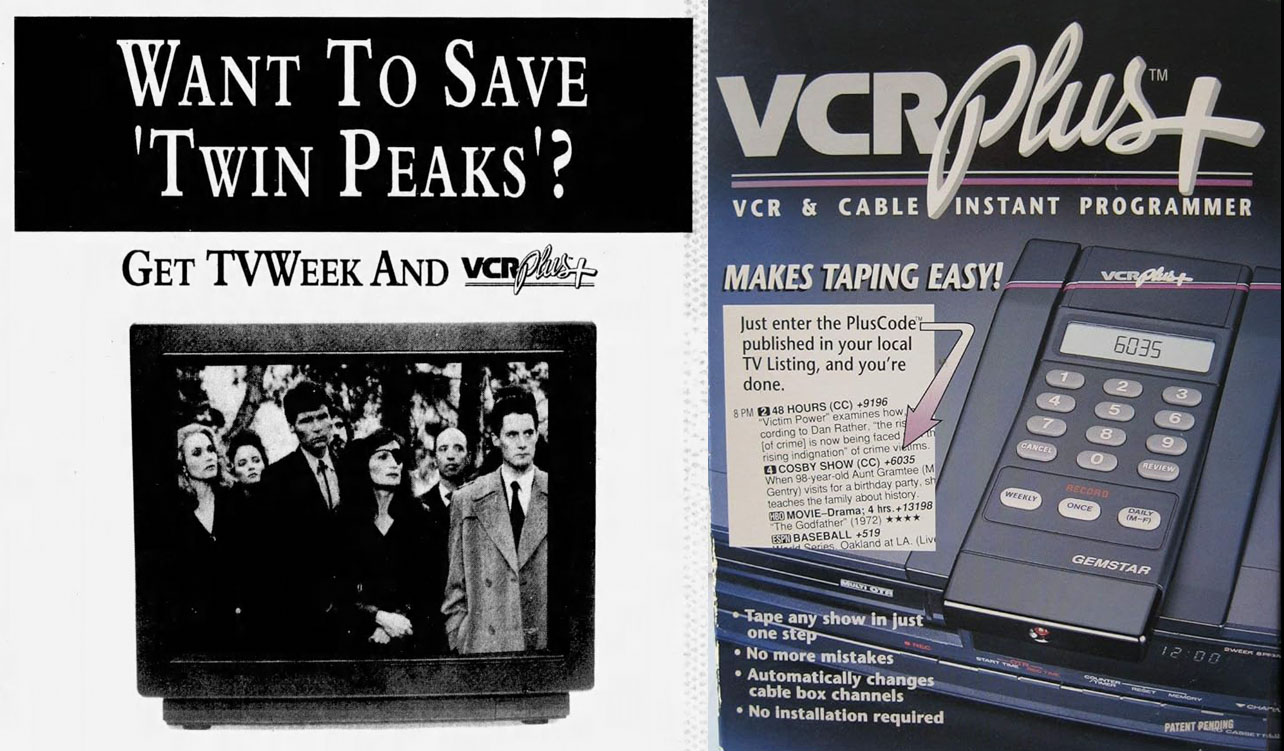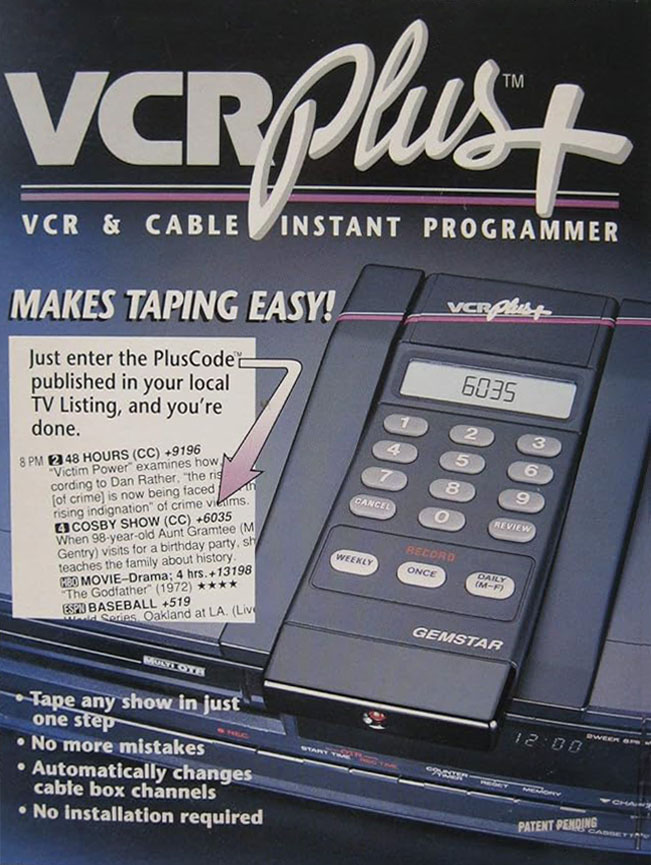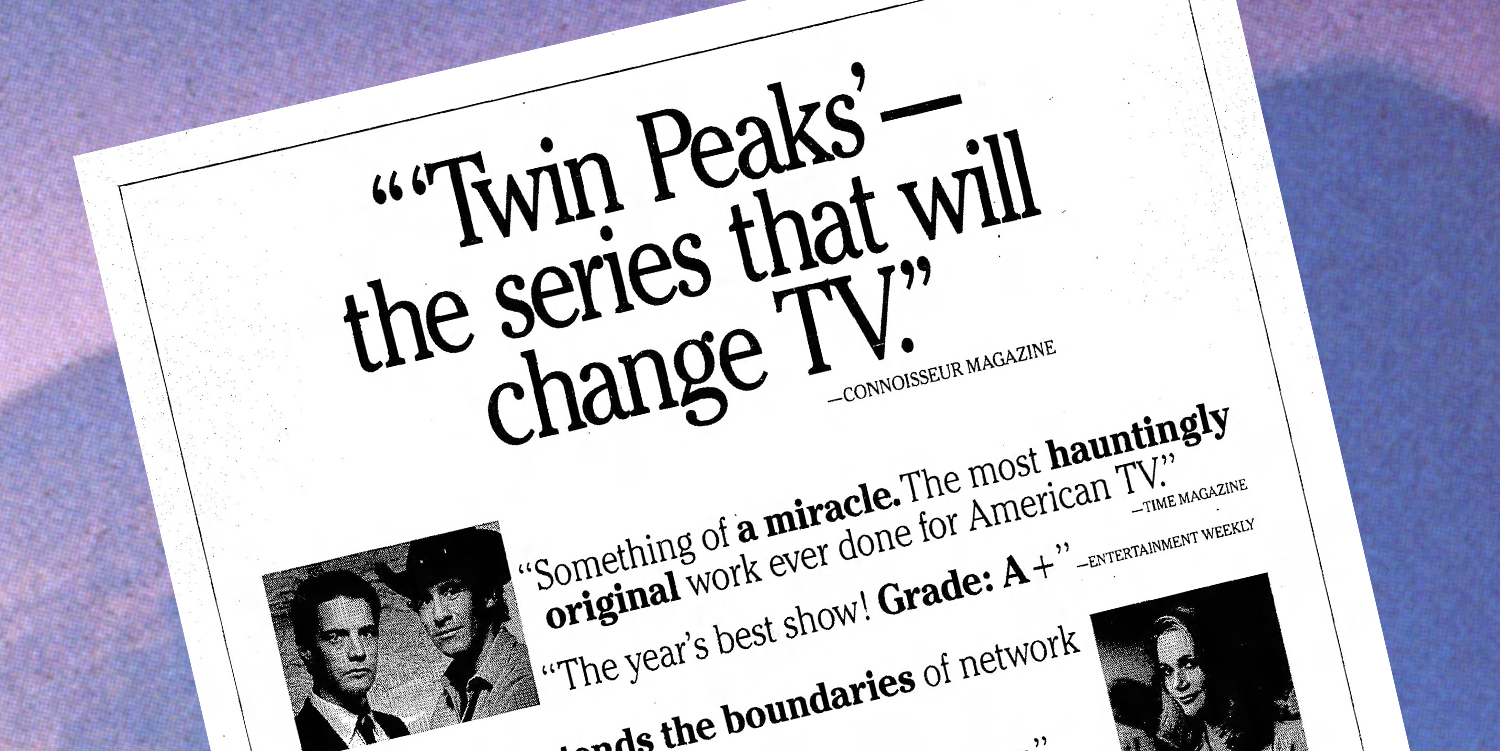In this day of streaming services and 4K Ultra HD discs, it’s wild to think Twin Peaks first aired when those things were only futuristic daydreams. In 1990-1991, the only way people could watch David Lynch and Mark Frost’s “wonderful and strange” show on a different day or time than it was broadcast was to record it using a VCR. But fans first needed to remember what day ABC aired the show and then program their home recording device. Thankfully, the task became slightly easier in fall 1990 with Gemstar’s VCR-Plus+. This instant programming gadget made sure shows weren’t missed, and, for one newspaper outlet in 1991, Twin Peaks was at the center of their advertising campaign.
BRIEF HISTORY OF GEMSTAR’S VCR-PLUS+
In September 1990, The Los Angeles Times announced J. Walter Thompson, an L.A.-based advertising agency won a $3-million contract to create and place the advertising for a new gadget called VCR-Plus.
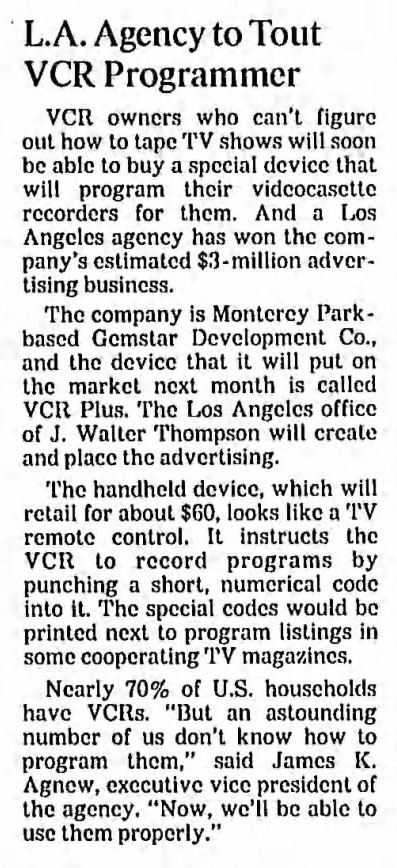
The $60 remote control-like device was manufactured by Pasadena, California-based Gemstar Development Company, a privately held company formed in 1986. The device was invented by Henry Yuen and Daniel Kwoh, two scientists with degrees from the California Institute of Technology. The VCR-Plus+ device was the first major development by the company in its five year existence.
Using a short numerical code, the device would tell a VCR to record a particular program. Why was this needed?
According to James K. Agnew, executive vice president of J. Walter Thompson, while many households in the United States had VCRs, many folks didn’t know how to use them.
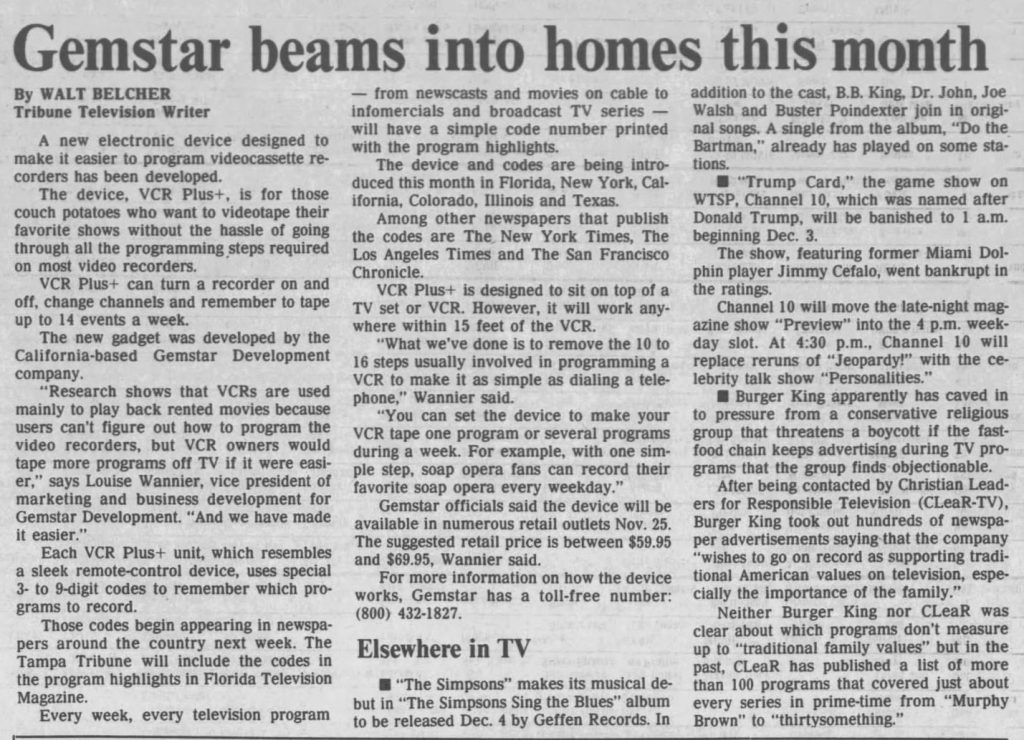
Louise Wannier, Gemstar’s vice president of marketing and business development, provided some additional points why the device was created.
“Research shows that VCRs are used mainly to play back rented movies because users can’t figure out how to program the video recorders, but VCR owners would tape more programs off TV if it were easier,” explained Wannier. “And [Gemstar] has made it easier.”
Andy Pargh offered an insightful description for how the device worked when he wrote, “Finally an easy way to program VCRs” for the Rock Island Argus on November 10, 1990: “The best way to understand how this unit works is to compare the VCR-Plus to a player piano. On a player piano, once you have loaded the music, the keys move and the music plays, but no one is touching the keyboard.”
Gemstar rolled out their new product just in time the holiday shopping season in 1990. But a key part of the equation for success was having newspapers print the necessary 3-to-9 digit programming code.
By November 25, the device and codes were introduced in Florida, New York, California, Colorado, Illinois, and Texas. Other major publications such as The New York Times, The Los Angeles Times, and The San Francisco Chronicle also began printing VCR-Plus+ codes.
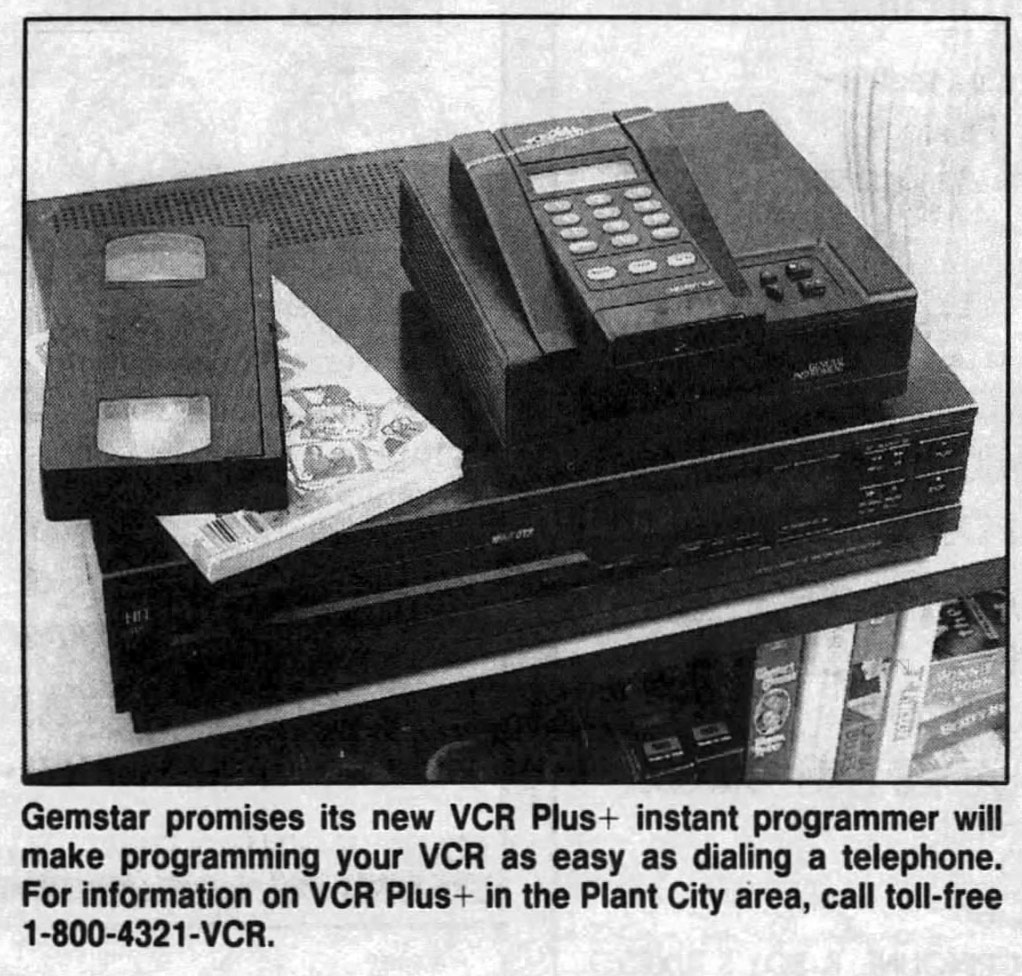
The device could either sit on top of a TV set or VCR or would also work anywhere within 15 feet of the VCR. Users could program the device to record one program or several programs in a week.
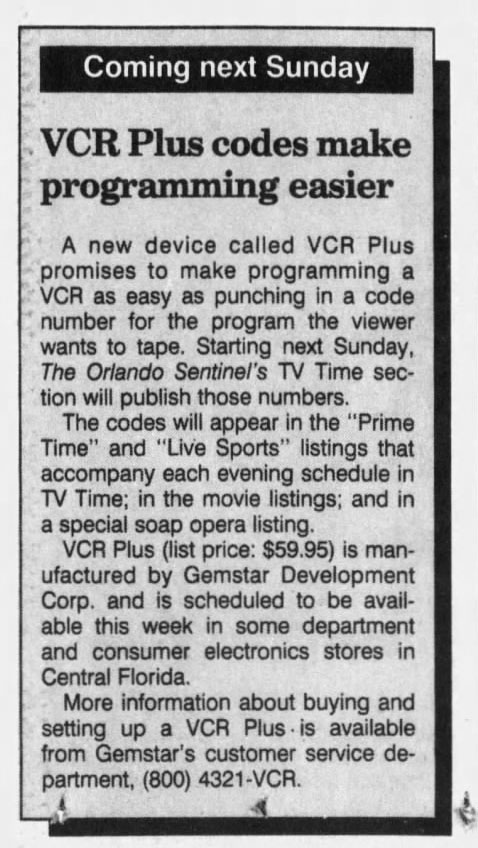
The Orlando Sentinel published in their November 25, 1990 edition that new VCR Plus codes would start appearing in the newspaper’s television listings.

This is an example of those early VCR Plus codes for Twin Peaks printed in The Sacramento Bee on November 25, 1990. The code – 13064 – would tell the VCR to turn on and record the show between 10:00-11:00 p.m. on the ABC Television Network. This listing above is for episode 2.009 which aired on December 1.
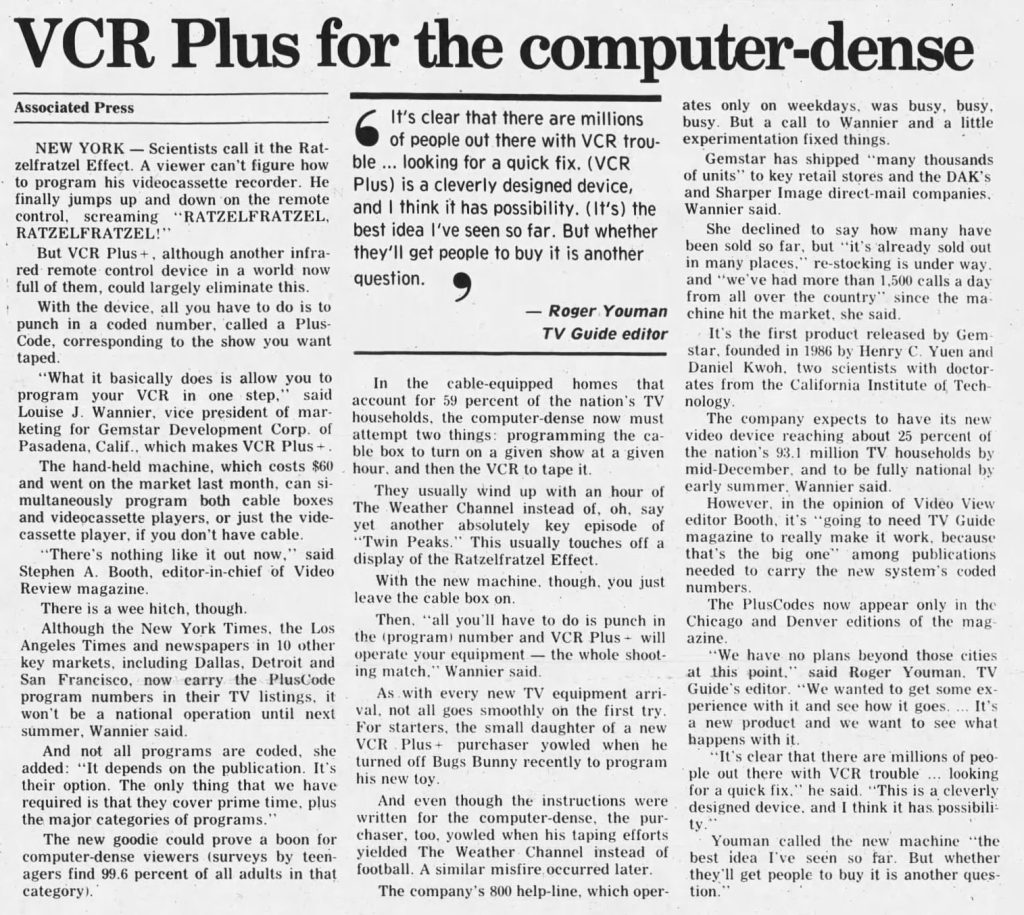
A few weeks after VCR Plus was introduced, sales were going very well.
“It’s already sold out in many places … and we’ve had more than 1,500 calls a day from all over the country,” said Gemstar’s Louise J. Wannier. She would later report in June 1991 that the company had originally projected to sell $1 million in sales. They were anticipating $3-4 million in sales for 1991.
An article by the Associated Press in Kingsport Times News on December 8, 1990 mentioned recording Twin Peaks.
“In the cable-equipped homes that account for 59 percent of the nation’s TV households, the computer-dense now must attempt two things: programming the cable box to turn on a given show at a given hour, and then the VCR to tape it. They usually wind up with an hour of The Weather Channel instead of, oh, say, yet another absolutely key episode of ‘Twin Peaks.'”
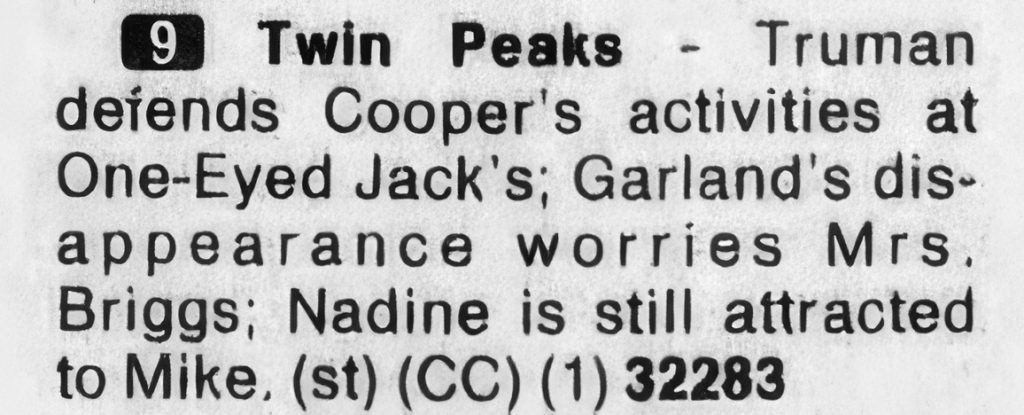
Codes would continue being printed in newspapers as Twin Peaks season two aired in December. Above is how the VCR-Plus code – 32283 – was added to a synopsis for episode 2.012.
WANT TO SAVE TWIN PEAKS? THE ATLANTA JOURNAL ADVERTISEMENTS
Let’s flash forward to March 1991. By this time, Twin Peaks had been on hiatus for several weeks following episode 2.016 on February 16. Following an intense letter writing campaign by fans, ABC Television began airing the rest of the season on March 28 with episode 2.017. By this time, VCR-Plus device and codes had been in market for nearly four months.
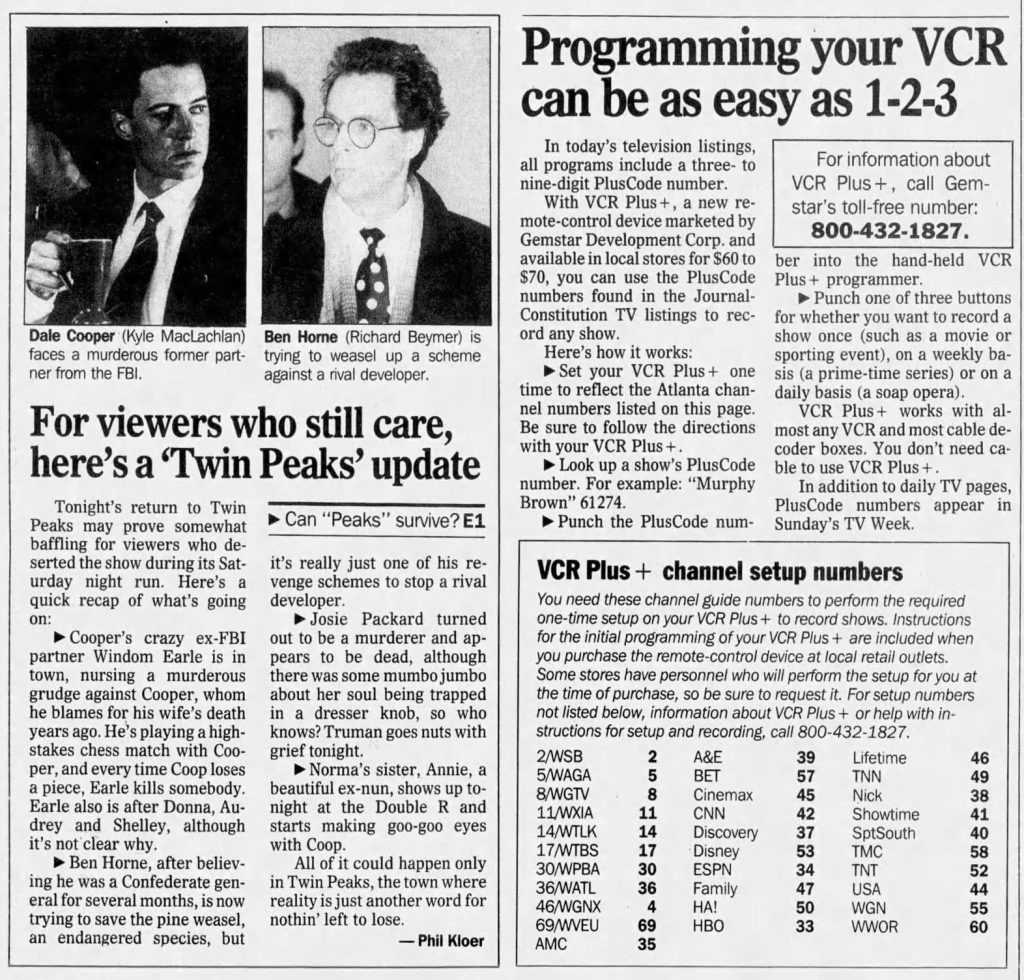
Phil Kloer wrote about Twin Peaks‘ return in The Atlanta Journal on March 28. The brief update was positioned conveniently next to an informational article about VCR-Plus+.
But even more surprising was seeing an advertisement with an image from Twin Peaks. These ads were published in both The Atlanta Journal and The Atlanta Constitution (before the newspaper eventually merged).
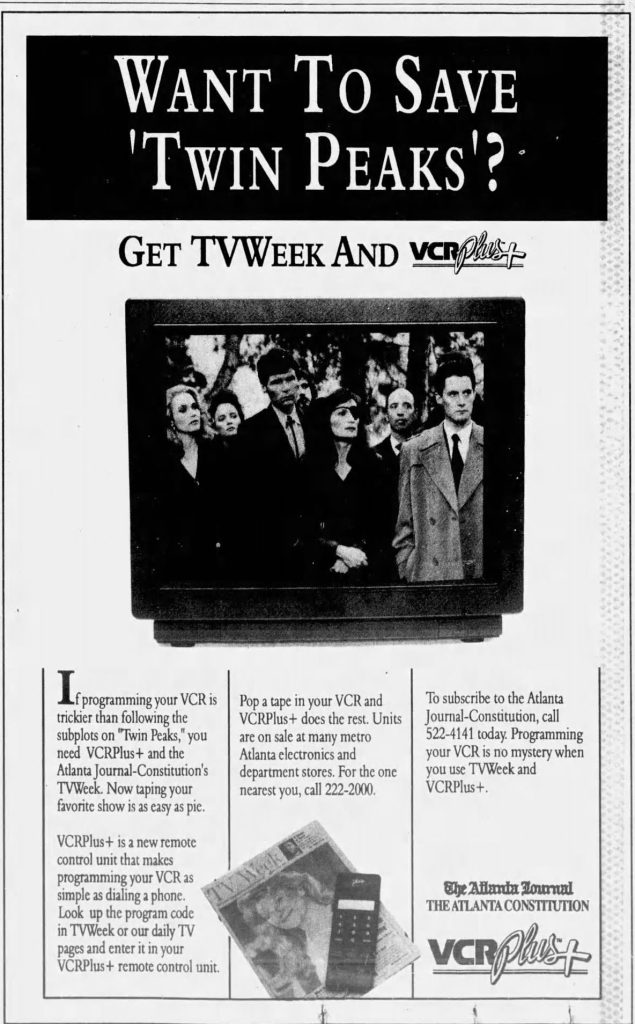
The ad included a television with a publicity photo from Laura Palmer’s funeral scene from Twin Peaks episode 1.003.
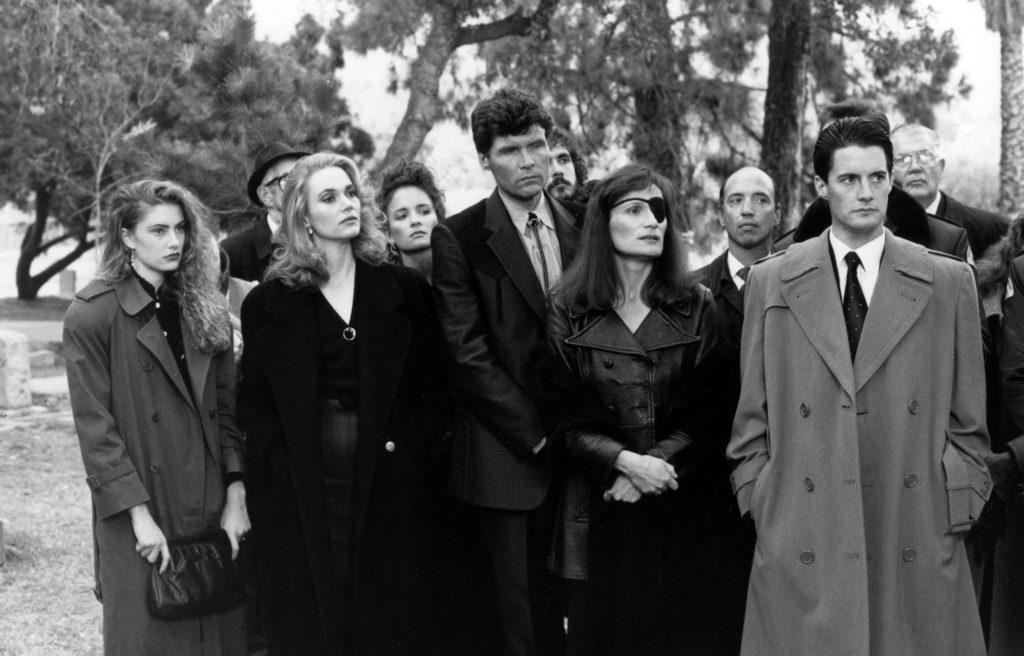
This is the uncropped image the newspaper used in the advertisement. The same ad would run for the entire month of April (they most likely purchased four-weeks worth of ads from the newspaper).
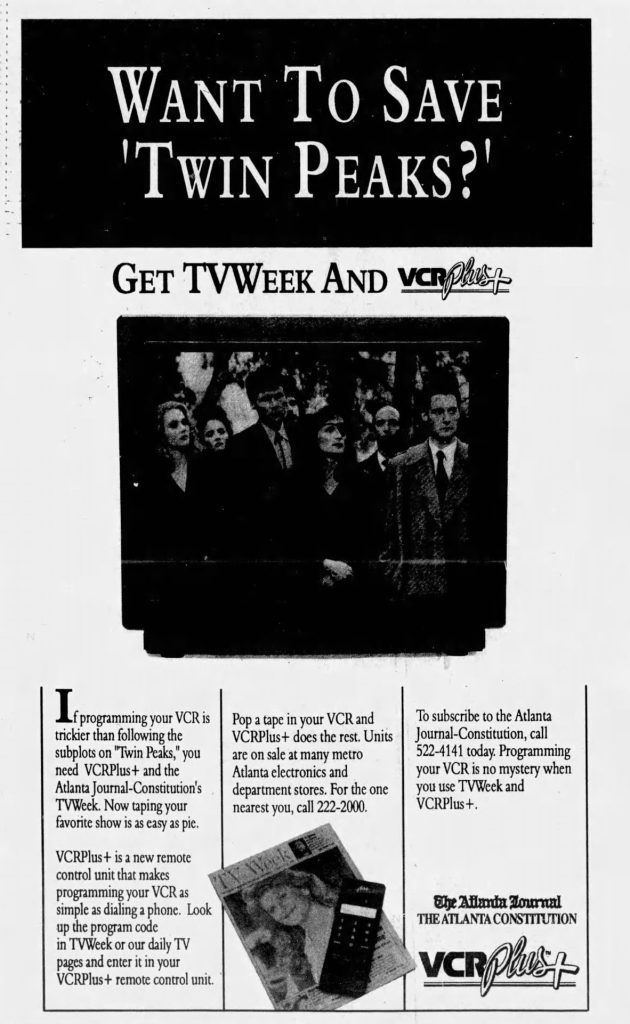
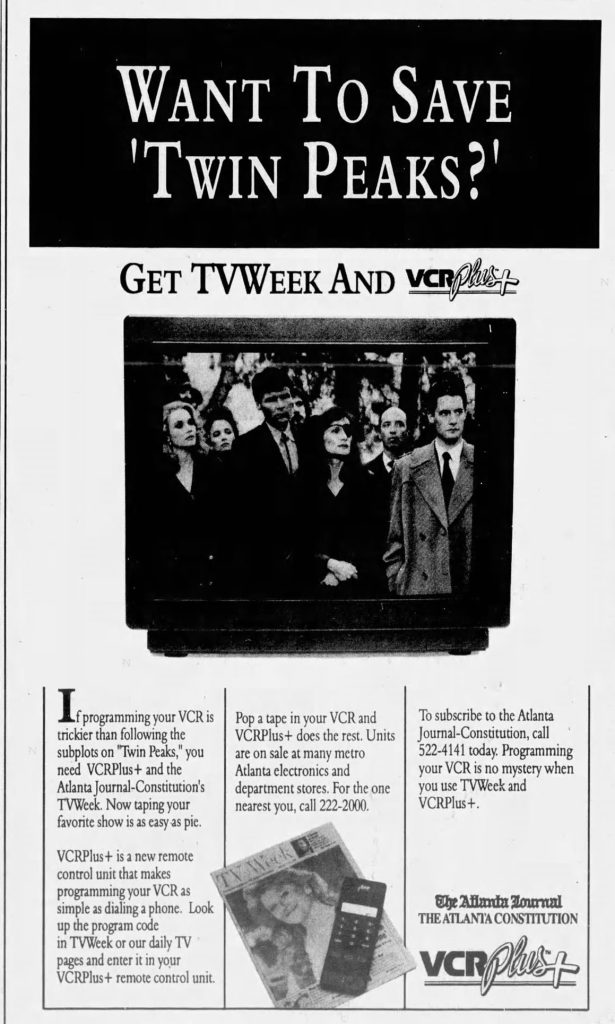
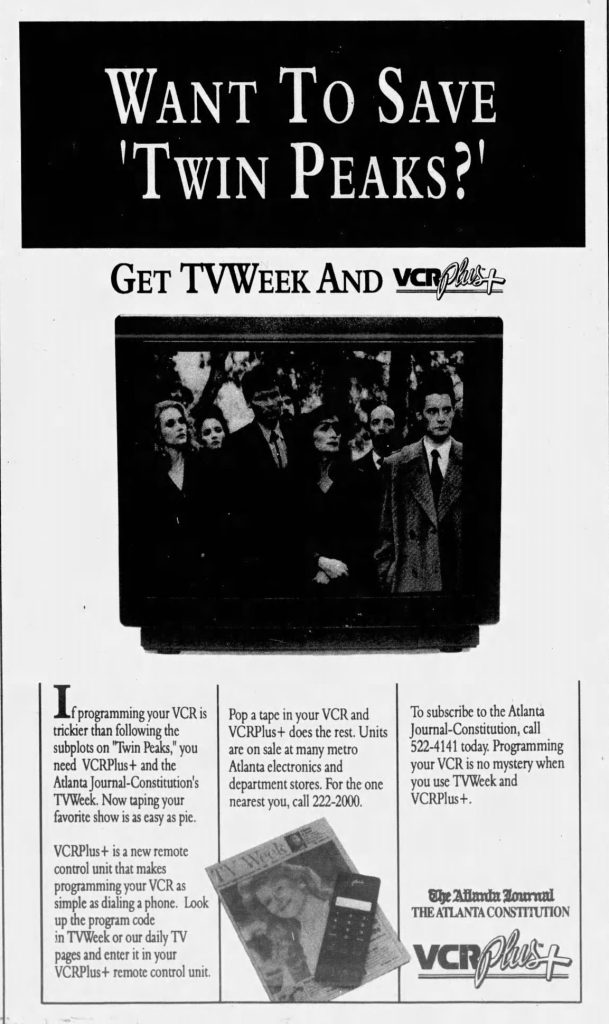
We all know the fate of Twin Peaks in 1991 – the show ended with a two-hour finale on June 10, 1991. Yet VCR-Plus+ codes would continue for decades.
According to a July 9, 2023 article in the Honolulu Star-Advertiser, the final plus codes were published in 2010 (which completely shocked me that they lasted that long). VCRs would continue being manufactured until 2016.
Of course Lynch and Frost’s show would return to television the next year with a third season where so much had changed during the passage of 25 years.
Discover more from TWIN PEAKS BLOG
Subscribe to get the latest posts sent to your email.

